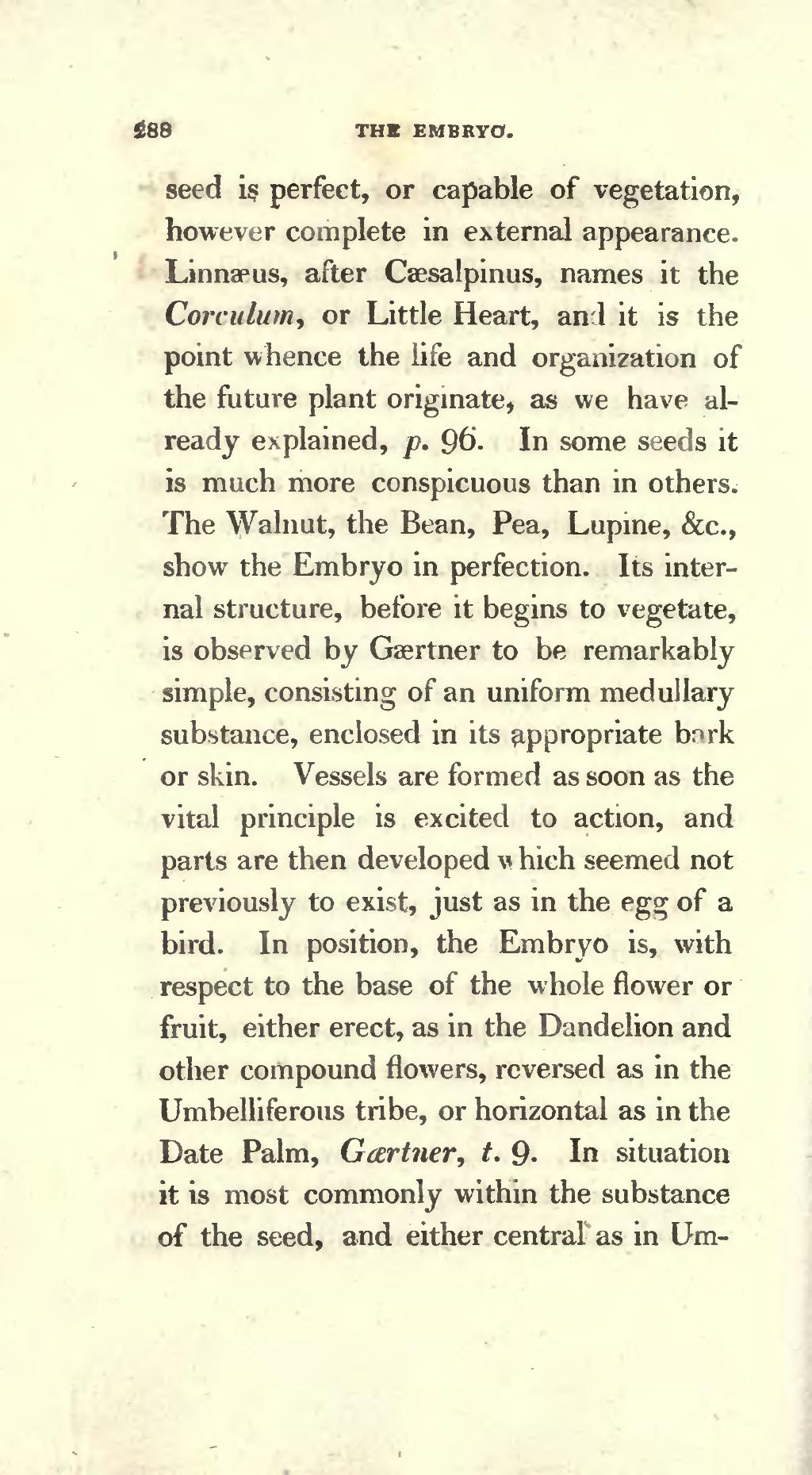seed is perfect, or capable of vegetation, however complete in external appearance. Linnæus, after Cæsalpinus, names it the Corculum, or Little Heart, and it is the point whence the life and organization of the future plant originate, as we have already explained, p. 96. In some seeds it is much more conspicuous than in others. The Walnut, the Bean, Pea, Lupine, &c., show the Embryo in perfection. Its internal structure, before it begins to vegetate, is observed by Gærtner to be remarkably simple, consisting of an uniform medullary substance, enclosed in its appropriate bark or skin. Vessels are formed as soon as the vital principle is excited to action, and parts are then developed which seemed not previously to exist, just as in the egg of a bird. In position, the Embryo is, with respect to the base of the whole flower or fruit, either erect, as in the Dandelion and other compound flowers, reversed as in the Umbelliferous tribe, or horizontal as in the Date Palm, Gærtner, t. 9. In situation it is most commonly within the substance of the seed, and either central as in Um-
Page:An introduction to physiological and systematical botany (1st edition).djvu/318
Appearance

